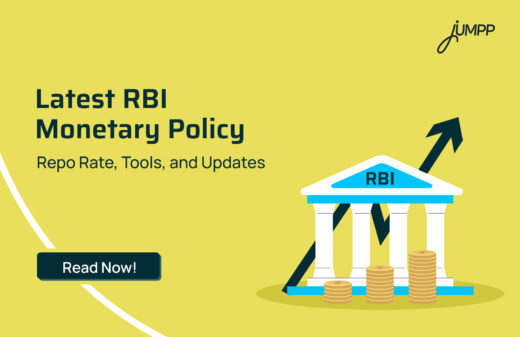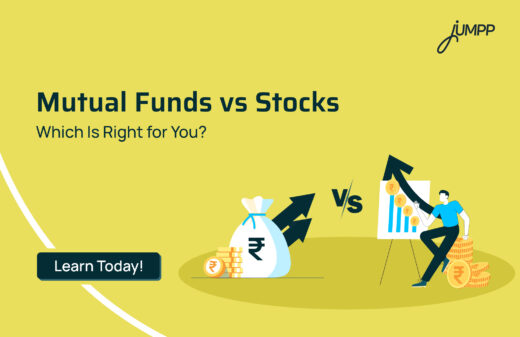What is a Fixed Deposit- Everything About Returns, Tax, and Withdrawals

If you ask someone for advice on your first time investing money, you’ll hear one thing: “FD karwa lo, tension mat lo.” Fixed Deposits are trusted by our parents, grandparents, and even first-time earners. But beyond this comfort factor, how do they actually work? And are they still the best option today? For many Indian households, the first lesson in money isn’t stocks or SIPs. It’s that yellow FD receipt tucked safely in a drawer. Fixed Deposits are a symbol of security, discipline, and trust. But what exactly makes them so popular even today?
Let’s see!
What is a Fixed Deposit
A Fixed Deposit (FD) is a type of low-risk investment offered by banks and financial institutions where you park a lump sum amount for a fixed period, in return for a guaranteed interest rate.
Unlike a savings account, where your interest rates can change and returns are modest, a fixed deposit gives you predictable growth over a defined tenure. The interest rate is locked in at the time of investment and does not fluctuate, regardless of market conditions.
When you book an FD, you invest a fixed amount at once. Say ₹1 lakh for 2 years. This amount remains untouched for the entire tenure unless you opt for premature withdrawal. You choose a time period for your FD, which can range from 7 days to 10 years. The longer the tenure, usually the higher the interest rate, depending on the bank’s offering.
The rate of interest is pre-agreed and remains constant during the tenure of the FD. Even if market rates fall later, your FD will continue to earn the same guaranteed return.
Banks give you options on how you want to receive your interest:
- Cumulative FD: Interest is compounded and paid at maturity
- Non-Cumulative FD: Interest is paid monthly, quarterly, or annually, as per your choice
This makes FDs suitable for both growth-focused investors and those looking for regular income.
Now, FDs are considered safe investments because they are not linked to the stock market. Your principal is protected, and returns are assured. Even in volatile times, FDs give you financial stability.
You can close your FD before its maturity, but there may be a penalty in the form of a reduced interest rate. Some banks also charge a small fee. This gives you some liquidity, but it’s better to avoid if you don’t need the funds urgently.
Banks offer a wide range of tenure options. You can open short-term FDs (less than a year) or long-term FDs (up to 10 years), depending on your goal, like building an emergency fund, planning a vacation, or saving for your child’s education.
Select banks offer Tax-Saver FDs with a lock-in period of 5 years. Investments in these FDs qualify for a deduction of up to ₹1.5 lakh under Section 80C of the Income Tax Act. However, you cannot break them prematurely, and the interest earned is taxable.
Types of Fixed Deposits in India
Based on your goals, you can choose from the various types of FDs offered in Indian Banks-
1. Cumulative FD
In a cumulative FD, interest is not paid regularly. Instead, it’s compounded quarterly or annually and paid only at maturity. This is ideal if you’re looking to build a lump sum over time without needing regular payouts.
2. Non-Cumulative FD
This version pays interest monthly or quarterly. Useful for pensioners or those looking for a steady income from their savings.
3. Non-Callable FD
A non-callable FD cannot be withdrawn before maturity. Because of this restriction, banks often offer higher interest rates compared to regular FDs. It’s suitable for people who are sure they won’t need the funds early.
4. Tax-Saving FD
These come with a lock-in period of 5 years and offer tax deduction under Section 80C (up to ₹1.5 lakh). However, the interest earned is taxable.
Want to explore how Fixed Deposits compare with other financial instruments?
Check out our in‑depth guide on types of investments to make smarter, diversified investment choices.
FD Features You Should Know
Beyond the basic types, modern fixed deposits come with flexible features that many investors don’t explore. Whether you want better liquidity, higher returns, or emergency access to funds, these options can help you do more with your savings.
What is Sweep-in FD?
A sweep-in FD links your savings account with a fixed deposit. When the balance in your savings account goes beyond a certain limit, the excess is automatically moved to an FD to earn higher interest. If you ever need the money, it sweeps back into your account.
This gives you the best of both worlds: higher interest and liquidity.
What is OD Against FD?
Need urgent cash but don’t want to break your FD? You can take an Overdraft (OD) against FD. It’s like a loan where your FD acts as collateral. You can usually borrow up to 90% of your FD amount, and interest is charged only on the amount used, not the entire OD limit.
It’s cheaper than personal loans and is processed quickly by most banks.
What is Auto-Renewal in FD?
When you choose auto-renewal, your FD is automatically renewed for the same period and at the current interest rate on maturity. You don’t need to visit the bank or take any action. It’s a smart feature for long-term savers.
What is the Maturity Amount in FD?
The maturity amount is what you receive when the FD term ends. It includes your original deposit plus the interest earned. For cumulative FDs, the interest is compounded, so the final amount is higher.
Is Fixed Deposit Interest Taxable?
Yes. Interest earned from fixed deposits is fully taxable under “Income from Other Sources.” If your total interest exceeds ₹40,000 (₹50,000 for senior citizens) in a year, TDS (Tax Deducted at Source) is applied at 10%.
To avoid TDS, you need to submit Form 15G or 15H, if you are eligible.
Advantages of Fixed Deposits You Must Know
1. Guaranteed Returns
You know exactly how much you’ll earn from day one. Unlike mutual funds or shares, there’s no market risk. Your capital and interest are both protected.
2. Flexible Tenure
You can choose how long to invest—from 7 days to 10 years. This works well whether you’re saving short-term or planning something long-term like your child’s education.
3. Higher Interest than a Savings Account
FDs offer a better interest rate compared to regular savings accounts, especially for senior citizens who often get 0.25–0.50% extra.
4. Safe Investment Option
FDs are not linked to the stock market or any risky asset. Your money is in safe hands, especially if deposited with a scheduled bank or government-backed institution.
5. Loan Facility
Need funds urgently?
Instead of breaking your FD, you can take a loan or overdraft against it, often at a lower interest rate than personal loans.
6. Multiple Payout Options
FDs give you control. You can choose monthly, quarterly, or annual interest payouts, or go for cumulative growth (interest paid at maturity).
7. Tax-Saving Option
You can claim deductions up to ₹1.5 lakh under Section 80C with a 5-year tax-saver FD. It’s a secure way to save on taxes while growing your money.
Disadvantages of Fixed Deposits
1. Interest is Taxable
The interest you earn is fully taxable under “Income from Other Sources.” If it crosses ₹40,000 in a year (₹50,000 for senior citizens), banks start deducting TDS.
2. Lower Returns Compared to Market Investments
FDs are safe, but they often don’t beat inflation over the long term. If you’re wondering what is better than a fixed deposit for long-term wealth, you might want to explore equity mutual funds, stocks, or even real estate, as they may offer better returns if you can handle the risk.
3. Penalty for Premature Withdrawal
Breaking an FD before maturity usually results in a penalty or a lower interest rate. This can reduce your overall earnings.
4. Lock-in Reduces Liquidity
Once your money is locked into an FD, you can’t access it freely unless you break it or opt for a loan against it.
5. No Protection from Inflation
Even if your FD gives 6.5% interest, if inflation is at 7%, you’re actually losing value in real terms.
What’s the Difference Between FD and RD?
With an FD, you invest a lump sum once and earn interest on the whole amount. However, with an RD, you deposit a fixed amount every month and earn interest as your savings grow over time.
| Feature | Fixed Deposit (FD) | Recurring Deposit (RD) |
| Deposit Type | One-time lump sum | Monthly installments |
| Ideal For | Those with large savings | Regular savers with steady income |
| Liquidity | Locked for a fixed tenure | Locked for a fixed tenure |
| Interest Rates | Similar to RD | Similar to FD |
| Early Withdrawal | Allowed with a penalty | Allowed with a penalty |
In simple terms:
FDs are best when you have a lump sum to invest. RDs work well if you want to save a fixed amount every month. Both offer steady interest and are low-risk.
Looking Beyond FDs? Here’s Are Few More Investment Options You Should Know
Fixed deposits are stable and secure. But over the long term, they may not give returns that beat inflation.
What is better than Fixed deposit?
If you’re willing to take a little more risk for better gains, here are some options worth exploring:
- Mutual Funds: A mix of stocks and bonds managed by experts, often chosen for higher long-term returns.
- PPF: A government-backed savings option with tax benefits and steady, risk-free returns.
- Stocks: Direct investment in companies—high reward, high risk, and needs some homework.
- NPS: A retirement plan that blends safety with equity exposure and tax perks.
- Recurring Deposits: Monthly savings with fixed returns, ideal for building discipline.
- Gold: Still a favourite—now available in digital form, not just jewellery.
- Real Estate: A long-term bet for rental income or appreciation, but not very liquid.
- Sovereign Gold Bonds: Government-issued, interest-paying alternative to physical gold.
Now, you can invest in stocks, bonds, mutual funds and more with a free demat account!
Each of these options has its own benefits and drawbacks. FDs are great for short-term goals or if you want safety. But for long-term wealth creation, it’s smart to diversify.
Final Thoughts
Now that you know what a fixed deposit is and how it works, it’s easier to decide if it fits your financial plan. For stable returns, no surprises, and guaranteed growth, FDs are still a great choice. You can also explore smarter features like OD against FD, sweep-in, or go for non-callable options to boost earnings.
Before you choose an FD, compare interest rates, tenure flexibility, and features offered by different banks. It’s not just about locking money—it’s about using your savings wisely.
FDs in India- FAQs
A fixed deposit is when you lock in your money with a bank for a fixed period. You get a guaranteed return at a fixed interest rate, paid monthly, quarterly or at maturity.
Yes, but breaking it before maturity usually means you’ll get a lower interest rate. Some banks may also charge a small penalty.
It depends on the bank and the interest rate. For example, at 7%, you could earn around ₹7,000 in interest per year.
FDs are considered safe, but returns are not very high. It works well if your goal is stability, not aggressive growth.
Rates this high are rare in private banks. Sometimes, small finance banks or senior citizen schemes offer such rates for limited tenures. However, you need to research well before choosing any FD with high interest rates.
A Recurring Deposit (RD) lets you deposit a fixed amount every month for a set period. At the end, you get your total savings plus interest.
Regular FDs are not tax-free. However, 5-year tax-saving FDs qualify for deductions under Section 80C, but the interest earned is still taxable.
A Fixed Deposit (FD) is a lump sum amount you deposit with the bank for a fixed time at a higher interest rate. Unlike your savings account, you can’t freely withdraw from an FD before maturity without a penalty. Different banks may charge for the same.






